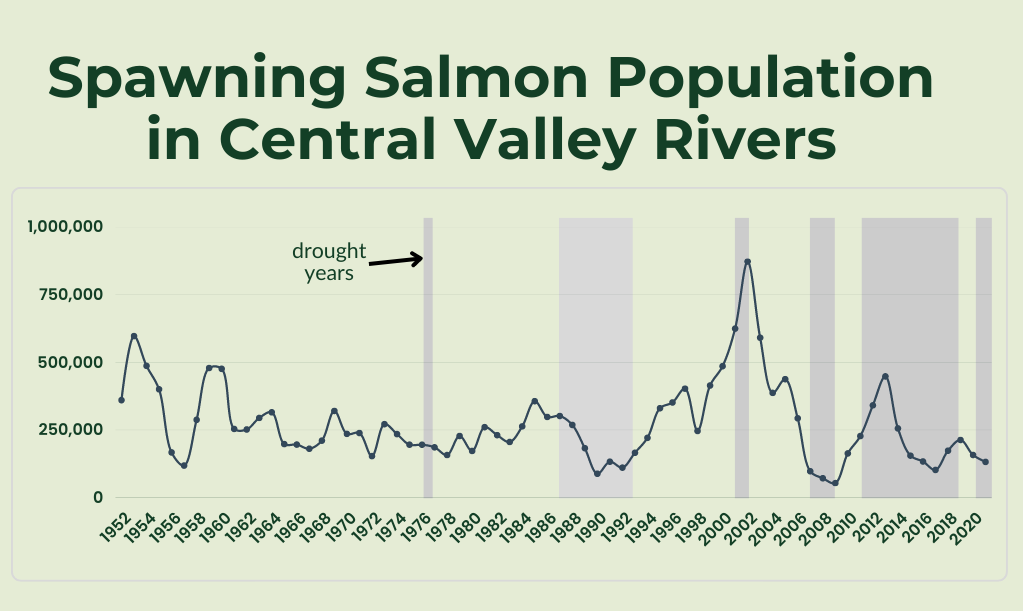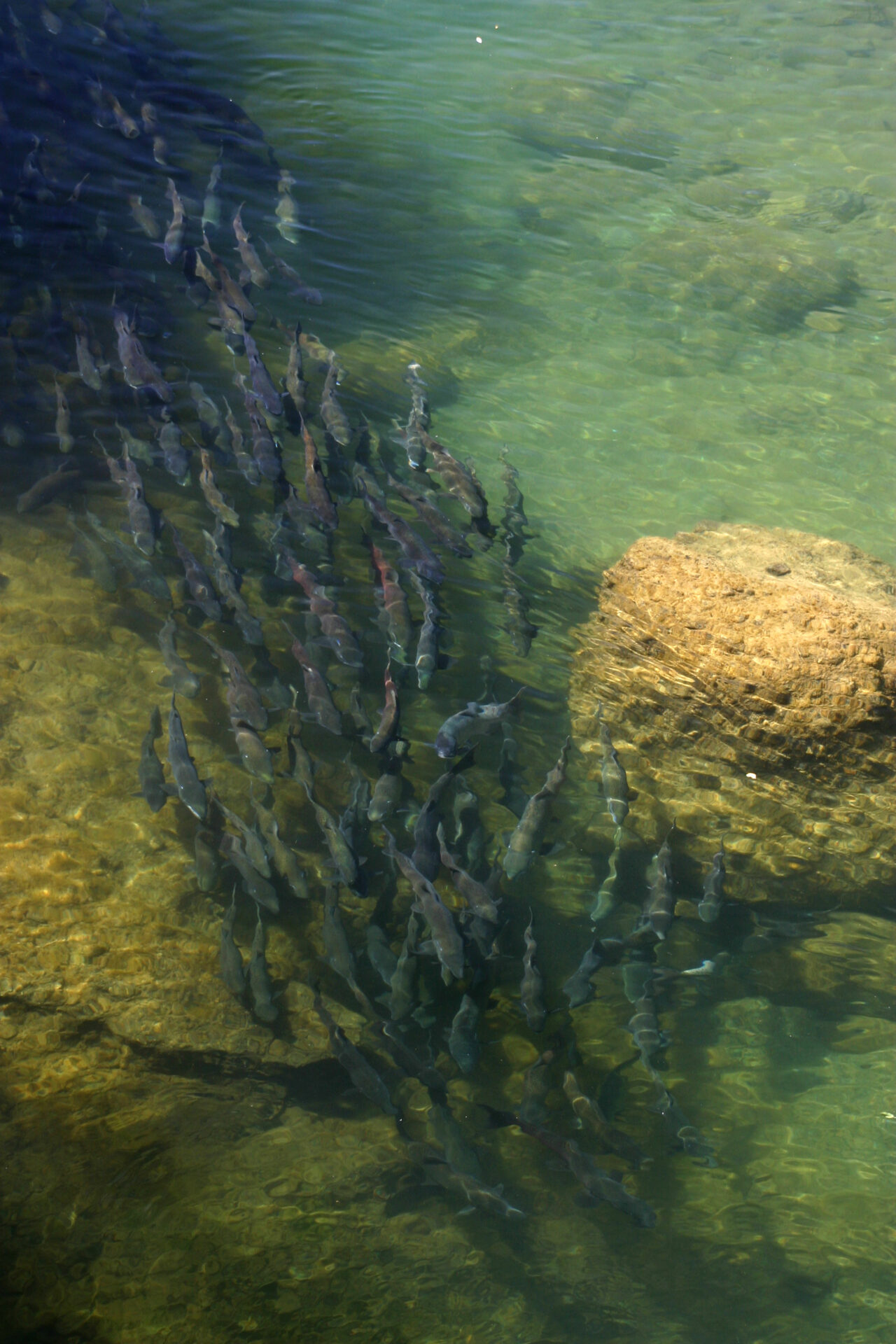Coastal Salmon Fishing Closed Through May 15th.
This month, state regulators announced that the coastal salmon fishing opening day, originally slotted for April 1st, will be closed through May 15th, barring any commercial or recreational fishing of Chinook salmon. While a decision to close inland fisheries will not be decided upon until May 17th, it is all but guaranteed per recommendations from the Pacific Fishery Management Council, the governing body that makes decisions on salmon management for Oregon, Washington, and California. Fishing for Chinook salmon in the Yuba River has been and will remain closed. This is undoubtedly a drastic measure for state management to take – but may not come as a surprise to those following last year’s salmon return.
Historically, as many as 2 million Chinook salmon made the journey to California Central Valley rivers and streams to spawn. Of those, 300,000 were thought to spawn in the Yuba River watershed. We do not have official estimates for the number of fall-run Chinook salmon that returned to the Yuba last year, but we can gather there were at least 2,689 salmon passage events up the Daguerre Point Dam fish ladders last fall, as captured by the VAKI Riverwatcher™ system. Last year, only 62,000 adult fall-run salmon were estimated to return to the Sacramento River according to CDFW estimates. That is the third lowest return on record for the Sacramento River, and only half of the fishery’s minimum target. The population has not plummeted this low since 2008 and 2009, the only other years in California history when salmon fishing was closed in the state.

A closed fishery means that many in the commercial fishing industry will be out of jobs, thousands of anglers will be unable to harvest, and you will find less locally caught salmon available in the grocery stores. Although some serious pains will be felt in the short-term, this measure will alleviate fishing pressure on this year’s fall salmon run and may help their numbers to bounce back. This was seen after 2008 and 2009 when salmon fishing was closed and California also experienced a big water year the following season, similar to conditions we are seeing now.
Chinook salmon are generally 3 years old when they return to spawn, so the population of spawning adults is more a function of the conditions those rearing juveniles experienced three years prior. If we think back to 2019, the earth experienced the second hottest year on record, making thermal conditions in rivers and the delta not optimal.
Many factors play in to whether juveniles successfully migrate to the ocean and return as adults. Some of the many obstacles they face during their lifecycle include: impassable dams that block access to the nearly half of historic spawning habitat in the Central Valley, degraded habitat as a result of poor resource management, water temperatures that may elevate to a lethal level before eggs even have the chance to hatch, drought conditions, predation and competition from non-native fish, and a novel threat first recorded in 2020- thiamine deficiencies thought to be caused by the over consumption of anchovies.
Between big water and SYRCL+Partners restoration projects, Yuba Chinook salmon will have new spawning habitat at Rose Bar this coming fall, and lots of new rearing habitat ready for those juveniles to grow up healthy and thrive in the ocean.
Did you enjoy this post?
Get new SYRCL articles delivered to your inbox by subscribing to our ENews.



